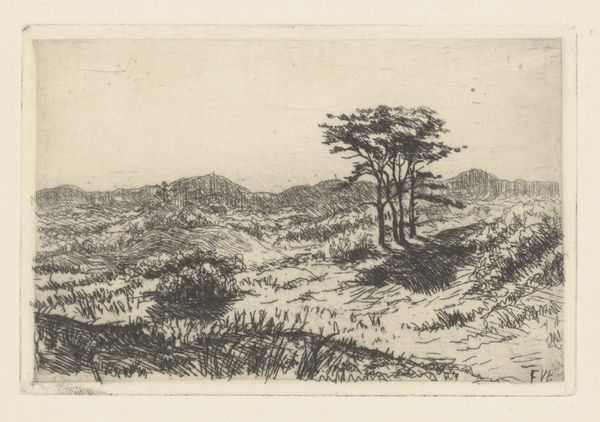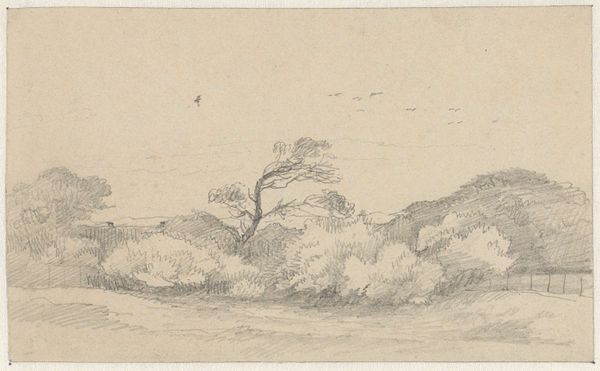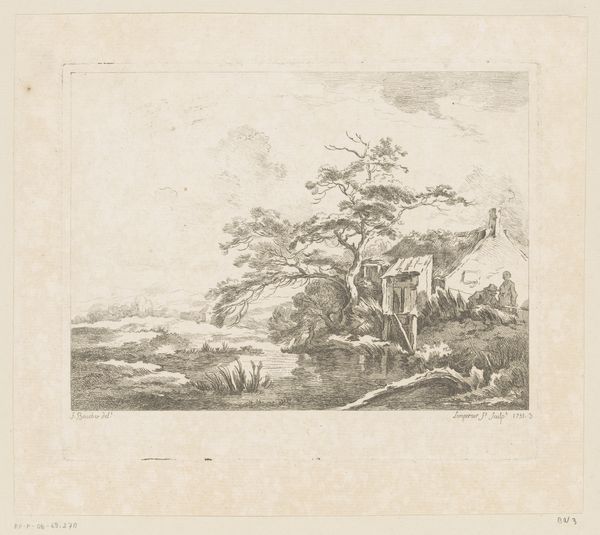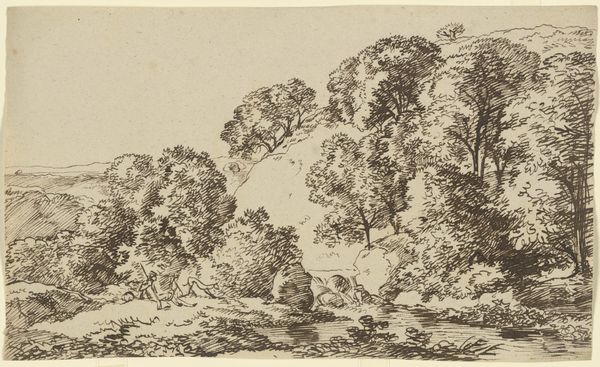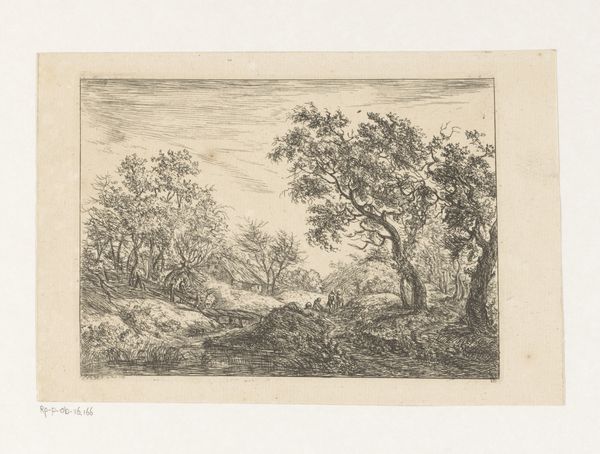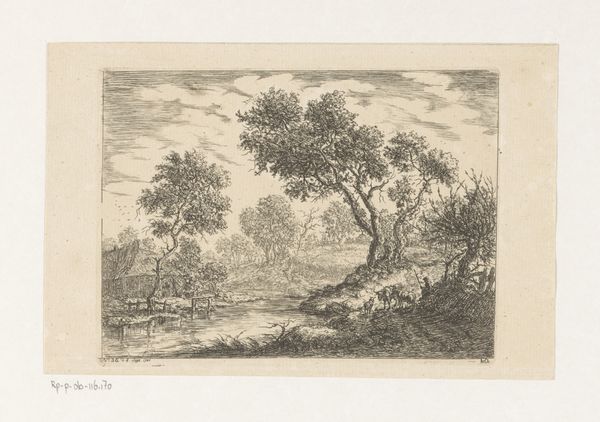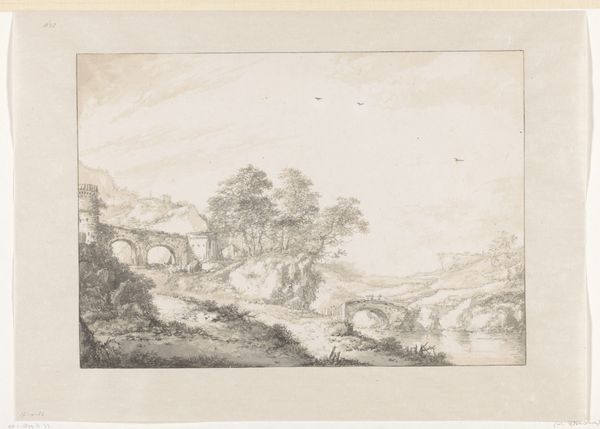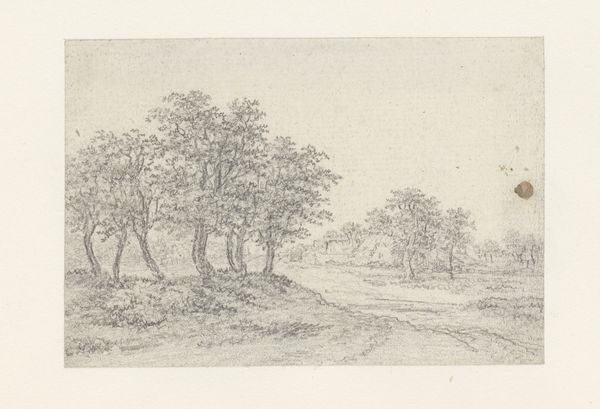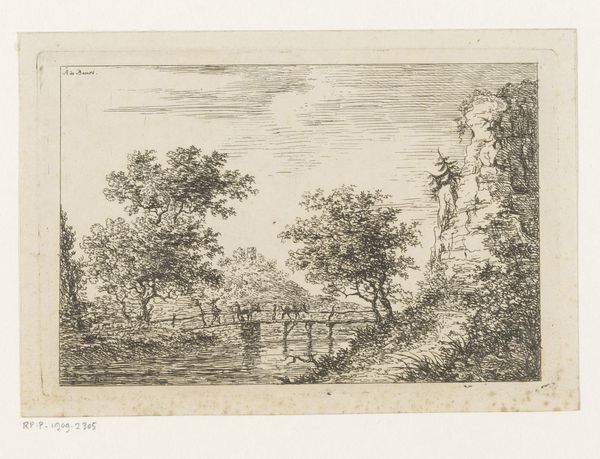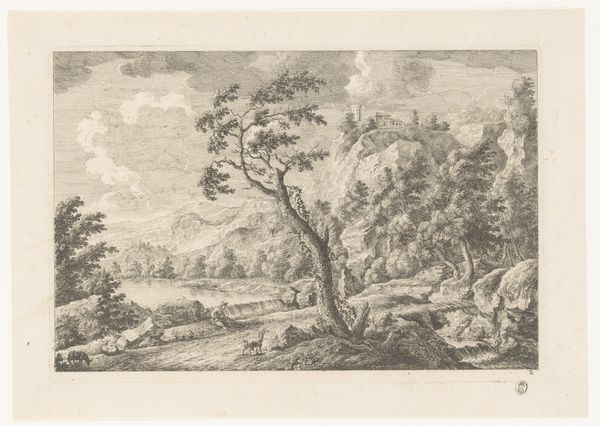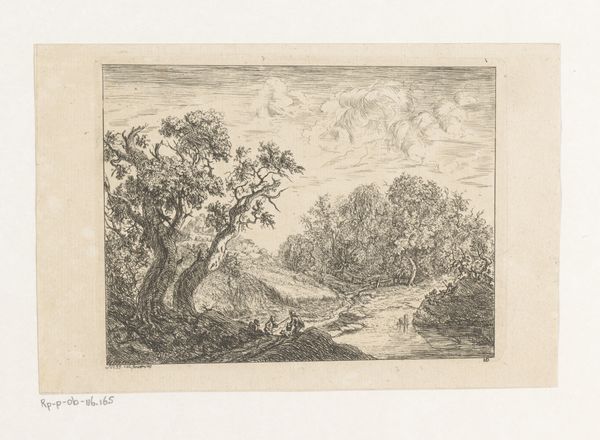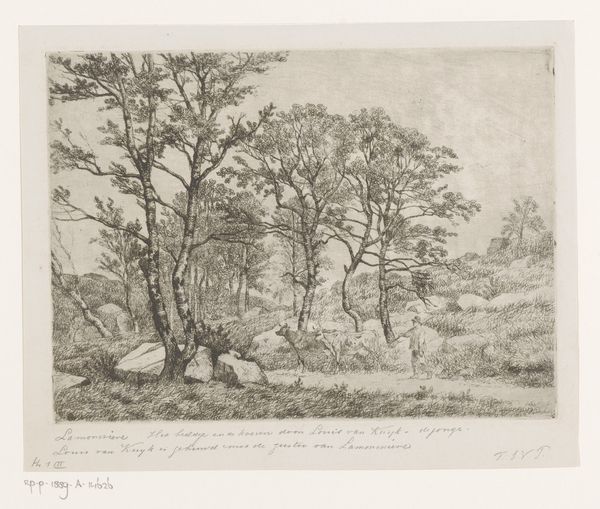
#
toned paper
#
light pencil work
#
pen sketch
#
pencil sketch
#
etching
#
personal sketchbook
#
ink drawing experimentation
#
pen-ink sketch
#
mountain
#
sketchbook drawing
#
sketchbook art
Dimensions: height 165 mm, width 219 mm
Copyright: Rijks Museum: Open Domain
Editor: Here we have "Bergachtig landschap met bomen" which roughly translates to "Mountainous landscape with trees". Created sometime between 1851 and 1913 by Agustin Riancho, it appears to be a pen sketch, and possesses an undeniable tranquility. How do you interpret this work and perhaps contextualize its social setting? Curator: The etching's simplicity is precisely its power, isn't it? Consider how landscape art during this period was frequently used to assert national identity, particularly as burgeoning national movements gained momentum. This scene, devoid of explicit figures, still implies a certain ownership. Do you think Riancho is presenting us with an idealized, perhaps even romanticized view of the land, implicitly suggesting Spanish dominion? Editor: That's a fascinating thought. I was initially drawn to the seeming lack of narrative, but now I see the land *itself* could *be* the subject. Does the medium—the delicate lines of an etching—affect this interpretation? Curator: Absolutely. The etching's reproducibility meant wider dissemination. A print like this in the home became a symbol of belonging and even of status. How do these factors shape our contemporary understanding? What power dynamics might this scene inadvertently perpetuate? Editor: I hadn't considered that aspect. So, it is not just a peaceful landscape, but an ideological statement that was, potentially, politically charged depending on its ownership? I’ll definitely look at landscape art through a different lens now! Curator: Precisely. Recognizing that art often serves interests beyond the aesthetic allows us to fully engage with both history and society.
Comments
No comments
Be the first to comment and join the conversation on the ultimate creative platform.
